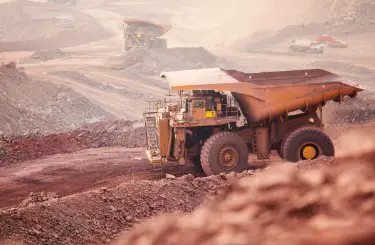The Iron Ore Mining Industry is characterized by several major players, each with its own distinct strengths, strategies, and contributions to the global market. In this comparative analysis, we'll delve into the key statistics and insights of four leading companies in the sector: Rio Tinto, BHP, Vale, and Fortescue Metals Group.
Production Capacity:
- Rio Tinto: Rio Tinto stands as a behemoth in iron ore production, reporting a staggering output of 330.6 million metric tons in 2020. Its Pilbara iron ore mines in Western Australia are renowned for their efficiency and scale.
- BHP: BHP operates the world's largest integrated iron ore mining and processing facilities in Western Australia's Pilbara region. The company reported a robust iron ore production of 248 million metric tons in 2020.
- Vale: As a leading global mining company, Vale boasts substantial iron ore production capabilities, with 300.4 million metric tons produced in 2020, representing approximately 19% of the global production.
- Fortescue Metals Group: Fortescue Metals Group, known for its rapid growth in the Australian iron ore mining sector, achieved record iron ore shipments of 178.2 million metric tons in 2020. Its focus on efficiency has bolstered its competitive edge.
Market Position and Global Presence:
- Rio Tinto: With a presence in multiple regions, Rio Tinto is among the largest diversified mining companies globally. Its iron ore assets are highly sought after for their quality and reliability.
- BHP: Formerly BHP Billiton, BHP is a major player in iron ore mining, with significant operations in Australia and Brazil. Its integrated supply chain and global footprint enable it to cater to diverse markets.
- Vale: Headquartered in Brazil, Vale commands a prominent position in the global mining landscape, particularly in iron ore. Its extensive reserves and integrated operations make it a leading supplier to global markets.
- Fortescue Metals Group: Fortescue Metals Group has emerged as a significant player in the Australian iron ore sector, primarily operating in Western Australia's Pilbara region. Its strategic investments have propelled its growth and market presence.
Sustainability and Environmental Stewardship:
- Rio Tinto: Rio Tinto has set ambitious targets to reduce greenhouse gas emissions and enhance environmental performance. Its commitment to sustainability is evident in its adoption of innovative technologies and responsible mining practices.
- BHP: BHP is committed to reducing operational emissions and achieving net-zero greenhouse gas emissions by 2050. Its focus on renewable energy and decarbonization aligns with environmental stewardship goals.
- Vale: Vale places a strong emphasis on environmental stewardship and community engagement. Efforts to reduce carbon emissions and promote social development underscore its commitment to sustainable mining practices.
- Fortescue Metals Group: Sustainability is a priority for Fortescue Metals Group, with investments in renewable energy and resource conservation initiatives. Its commitment to minimizing environmental impact reflects its long-term value-driven approach.
Conclusion:
Despite their unique strengths and strategies, these major players in the Iron Ore Mining Market share a common goal of meeting global demand while prioritizing sustainability and responsible practices. As the industry continues to evolve, collaboration, innovation, and strategic investments will drive sustainable growth and value creation in the sector.





